Abstract
For reasons of health and economics, the business community is displaying a growing interest in providing smoking cessation programs for employees. An examination of the current research on smoking cessation methods has revealed a number of promising directions that smoking cessation programs can take, for example, aversive smoking approaches combined with self-control strategies. A review of current smoking cessation programs in occupational settings revealed some emphasis on physician counseling, but a relatively greater emphasis on use of consultants (especially in proprietary programs) or of contingency programs to encourage nonsmoking.
The smoking cessation programs in businesses can move in a number of innovative directions, including (a) increased use of inhouse programs with a variety of smoking cessation strategies; (b) greater emphasis on the training of program participants in nonsmoking behavioral skills, combined with contingency or incentive programs for smoking control; (c) vastly improved research methods, including complete followup assessments of program participants and chemical tests to validate their self-reported abstinence; (d) greater concern about the need for empirically tested procedures for recruitment of participants for the programs; and (e) expanded interchange among behavioral scientists (especially behavioral psychologists), health professionals in occupational health and medicine, union and employee groups, and management.
Full text
PDF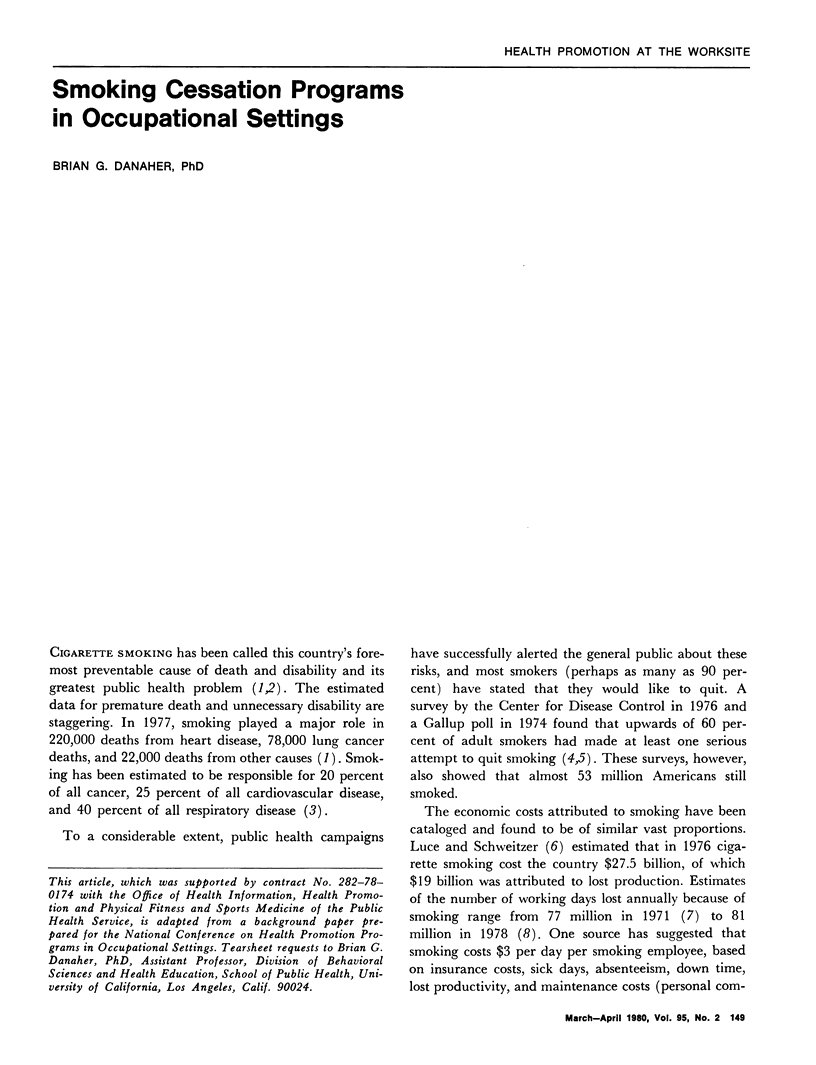
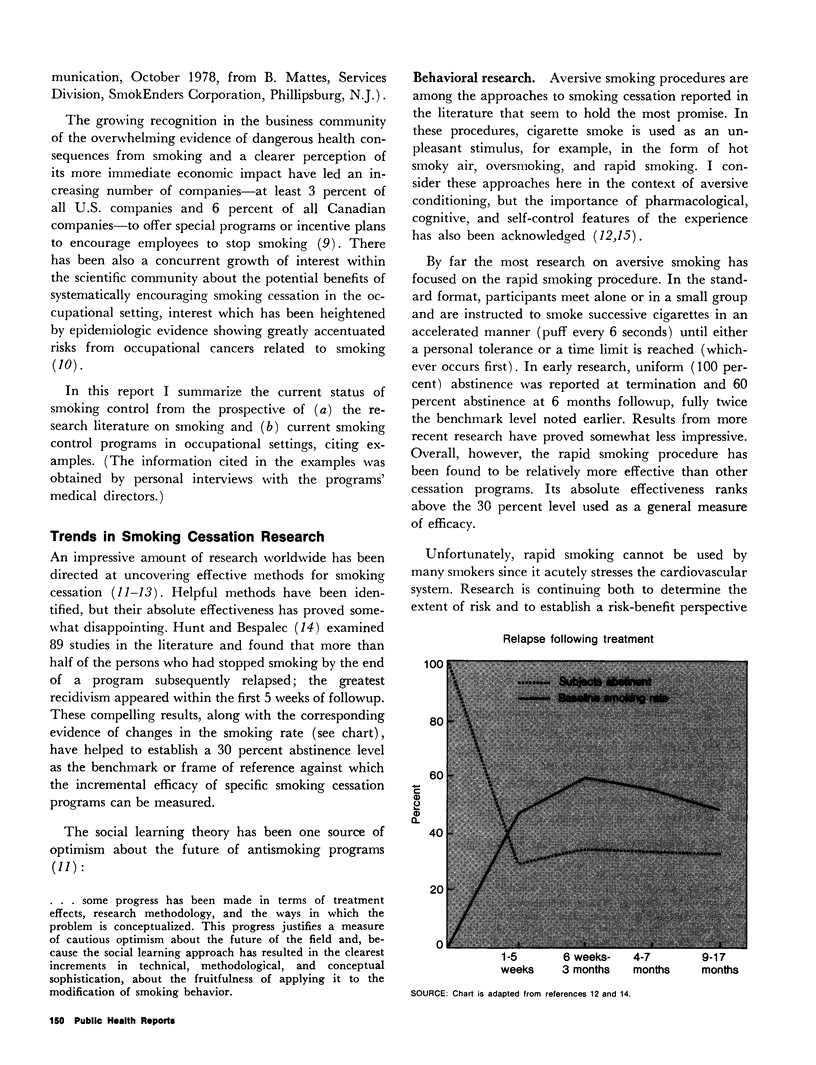
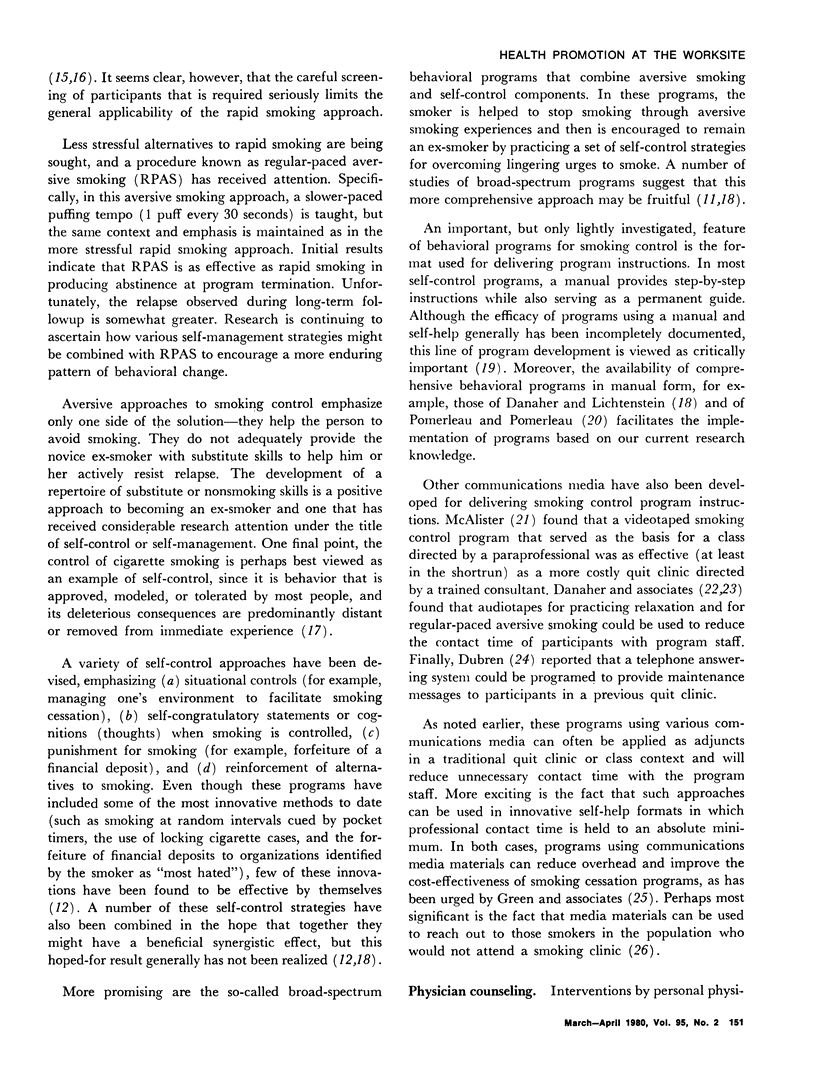
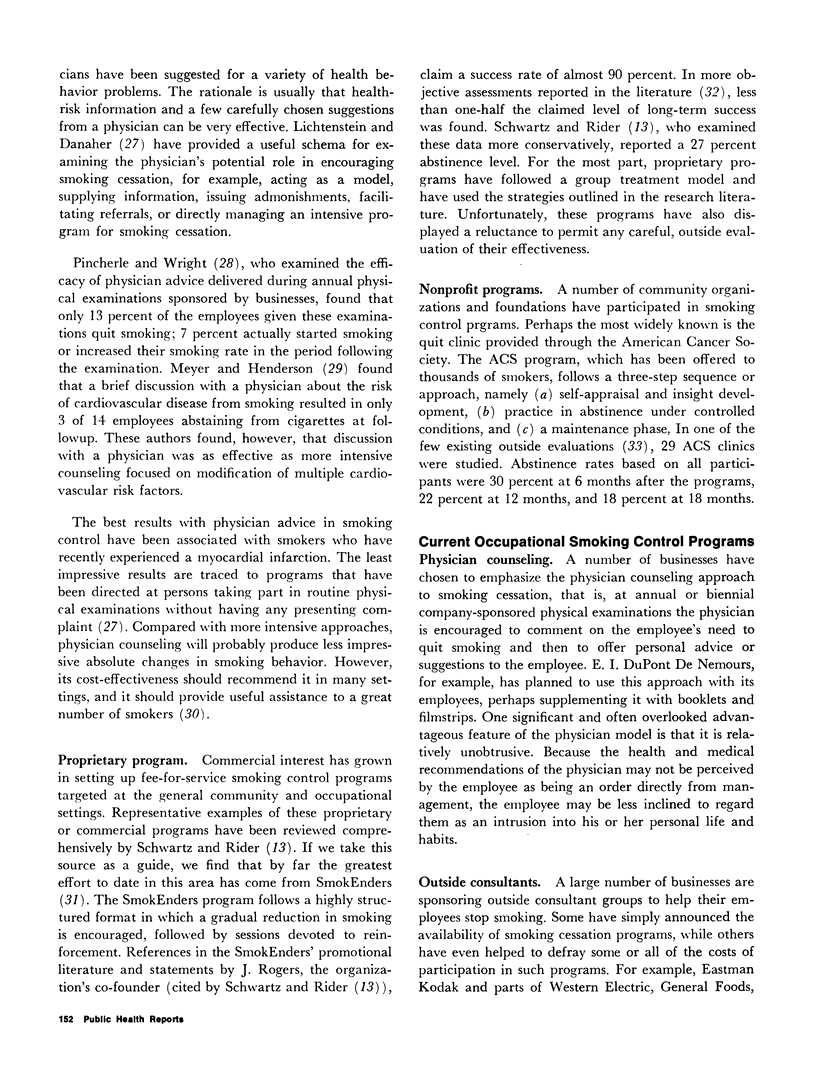
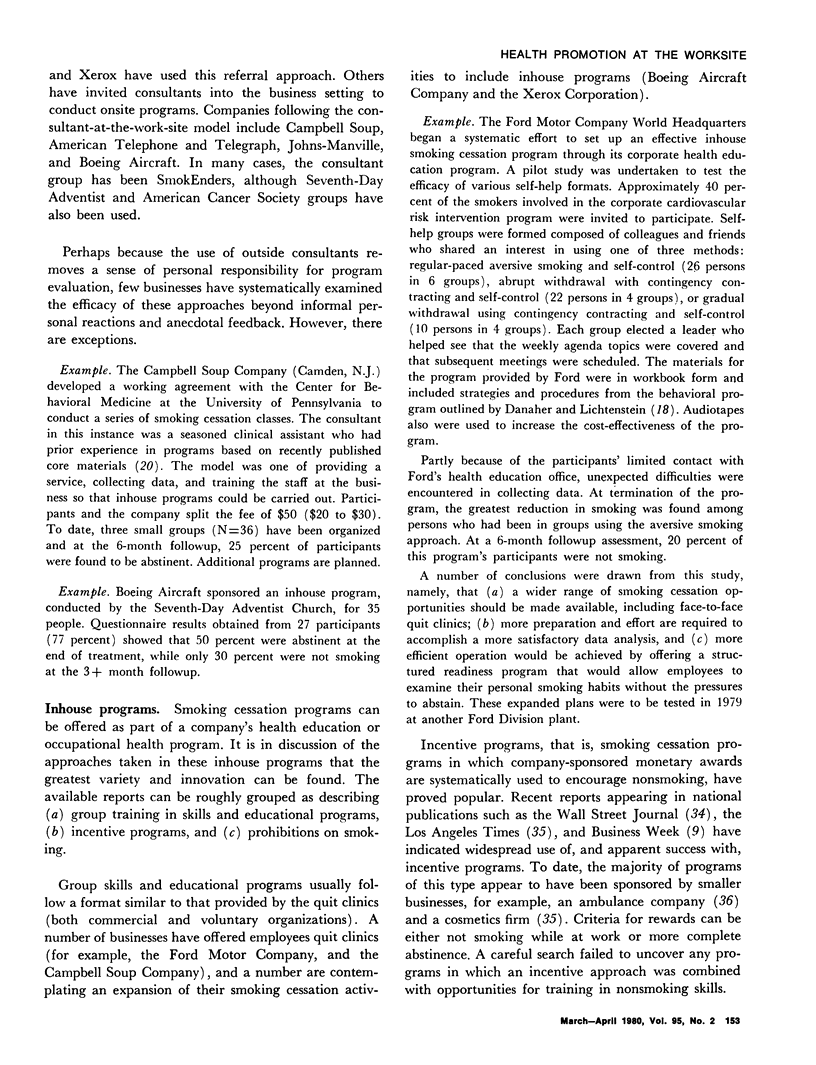
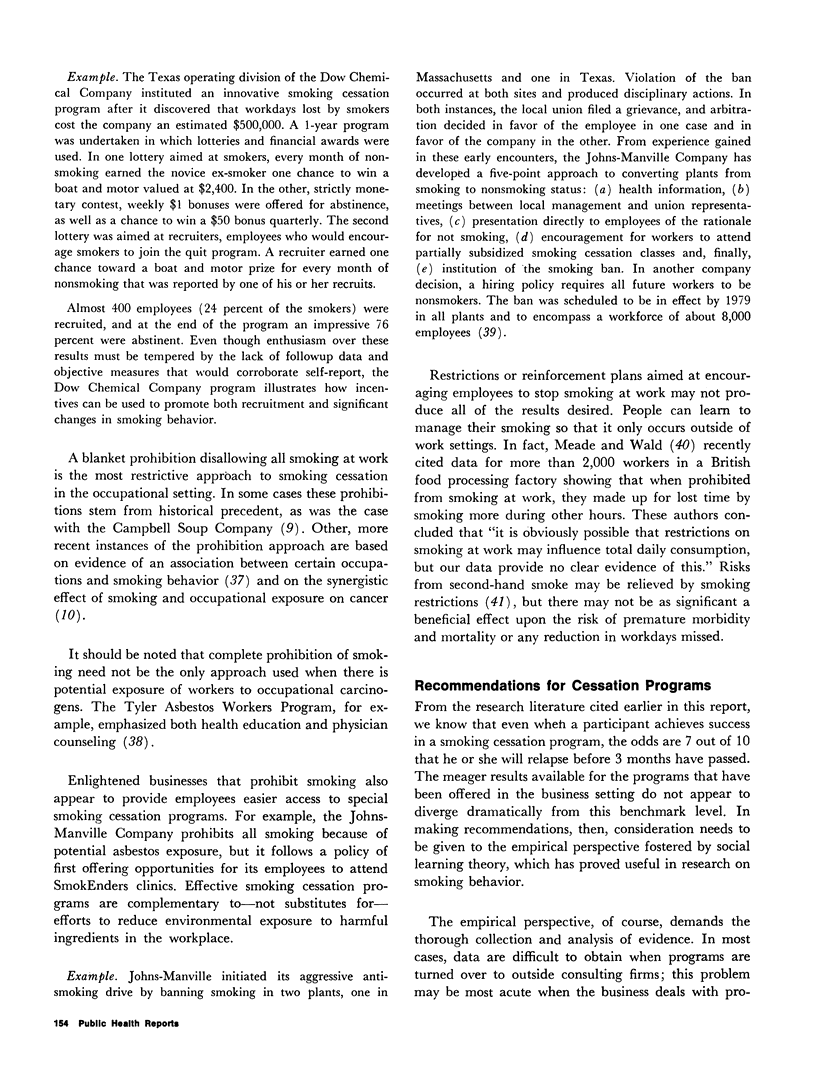
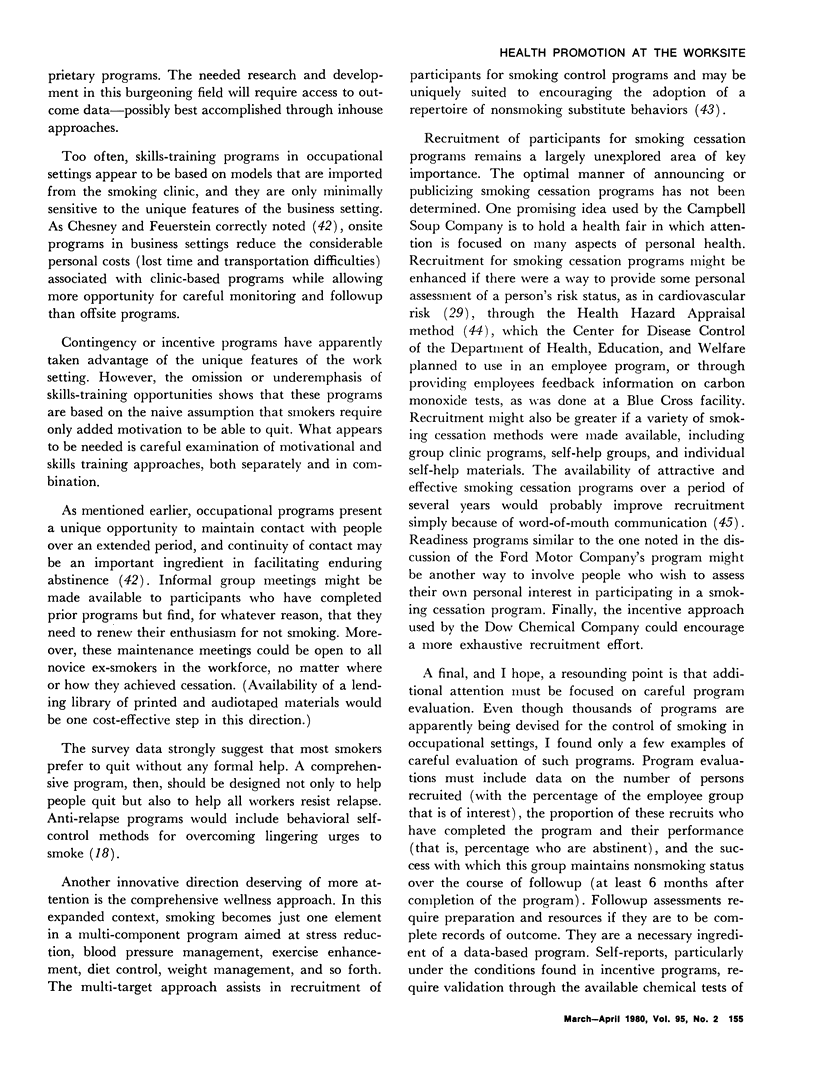

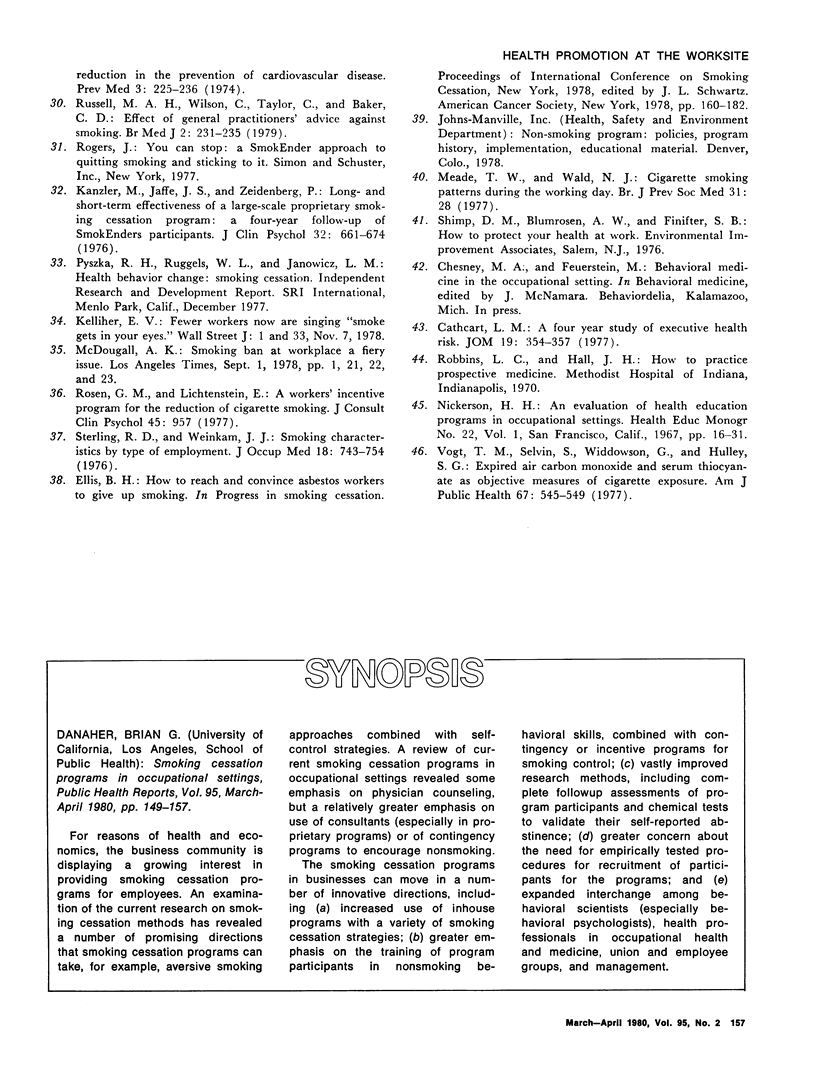
Selected References
These references are in PubMed. This may not be the complete list of references from this article.
- Boden L. I. The economic impact of environmental disease on health care delivery. J Occup Med. 1976 Jul;18(7):467–476. doi: 10.1097/00043764-197607000-00006. [DOI] [PubMed] [Google Scholar]
- Cathcart L. M. A four year study of executive health risk. J Occup Med. 1977 May;19(5):354–357. [PubMed] [Google Scholar]
- Danaher B. G. Research on rapid smoking: interim summary and recommendations. Addict Behav. 1977;2(4):151–166. doi: 10.1016/0306-4603(77)90013-2. [DOI] [PubMed] [Google Scholar]
- Danaher B. G., Shisslak C. M., Thompson C. B., Ford J. D. A smoking cessation program for pregnant women: an exploratory study. Am J Public Health. 1978 Sep;68(9):896–898. doi: 10.2105/ajph.68.9.896. [DOI] [PMC free article] [PubMed] [Google Scholar]
- Dubren R. Self-reinforcement by recorded telephone messages to maintain nonsmoking behavior. J Consult Clin Psychol. 1977 Jun;45(3):358–360. doi: 10.1037//0022-006x.45.3.358. [DOI] [PubMed] [Google Scholar]
- Glasgow R. E., Rosen G. M. Behavioral bibliotherapy: a review of self-help behavior therapy manuals. Psychol Bull. 1978 Jan;85(1):1–23. [PubMed] [Google Scholar]
- Hoffmann D., Wynder E. L. Smoking and occupational cancers. Prev Med. 1976 Jun;5(2):245–261. doi: 10.1016/0091-7435(76)90043-8. [DOI] [PubMed] [Google Scholar]
- Hunt W. A., Bespalec D. A. An evaluation of current methods of modifying smoking behavior. J Clin Psychol. 1974 Oct;30(4):431–438. doi: 10.1002/1097-4679(197410)30:4<431::aid-jclp2270300402>3.0.co;2-5. [DOI] [PubMed] [Google Scholar]
- Kanzler M., Jaffe J. H., Zeidenberg P. Long- and short-term effectiveness of a large-scale proprietary smoking cessation program. -A 4-year follow-up of Smokenders participants. J Clin Psychol. 1976 Jul;32(3):661–669. [PubMed] [Google Scholar]
- Luce B. R., Schweitzer S. O. Smoking and alcohol abuse: a comparison of their economic consequences. N Engl J Med. 1978 Mar 9;298(10):569–571. doi: 10.1056/NEJM197803092981012. [DOI] [PubMed] [Google Scholar]
- Meyer A. J., Henderson J. B. Multiple risk factor reduction in the prevention of cardiovascular disease. Prev Med. 1974 Jun;3(2):225–236. doi: 10.1016/0091-7435(74)90033-4. [DOI] [PubMed] [Google Scholar]
- Pincherle G., Wright H. B. Smoking habits of business executives. Doctor variation in reducing cigarette consumption. Practitioner. 1970 Aug;205(226):209–212. [PubMed] [Google Scholar]
- Rosen G. M., Lichtenstein E. An employee incentive program to reduce cigarette smoking. J Consult Clin Psychol. 1977 Oct;45(5):957–957. [PubMed] [Google Scholar]
- Russell M. A., Wilson C., Taylor C., Baker C. D. Effect of general practitioners' advice against smoking. Br Med J. 1979 Jul 28;2(6184):231–235. doi: 10.1136/bmj.2.6184.231. [DOI] [PMC free article] [PubMed] [Google Scholar]
- Sachs D. P., Hall R. G., Pechacek T. F., Fitzgerald J. Clarification of risk-benefit issues in rapid smoking. J Consult Clin Psychol. 1979 Dec;47(6):1053–1060. doi: 10.1037//0022-006x.47.6.1053. [DOI] [PubMed] [Google Scholar]
- Schwartz J. L., Dubitzky M. Expressed willingness of smokers to try 10 smoking withdrawal methods. Public Health Rep. 1967 Oct;82(10):855–861. [PMC free article] [PubMed] [Google Scholar]
- Sterling T. D., Weinkam J. J. Smoking characteristics by type of employment. J Occup Med. 1976 Nov;18(11):743–754. doi: 10.1097/00043764-197611000-00011. [DOI] [PubMed] [Google Scholar]
- Terry L. L. The future of an illusion. Am J Public Health. 1971 Feb;61(2):233–240. doi: 10.2105/ajph.61.2.233. [DOI] [PMC free article] [PubMed] [Google Scholar]
- Vogt T. M., Selvin S., Widdowson G., Hulley S. B. Expired air carbon monoxide and serum thiocyanate as objective measures of cigarette exposure. Am J Public Health. 1977 Jun;67(6):545–549. doi: 10.2105/ajph.67.6.545. [DOI] [PMC free article] [PubMed] [Google Scholar]


